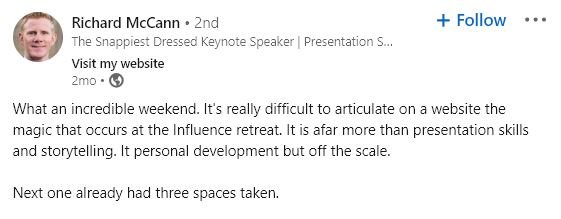Compassion fatigue? Empathic distress? Or plain old despair?
I limped across the 2023 finish line. I was tired, yet under-worked. Safe, but anxious. Excited about the holidays but … off.
As I read between the lines of LinkedIn posts, newsletters and end-of-year-stress-busting-workshop descriptions, it sounded to me like 2023 was hard for lots of people. Harder than we thought it would be. Harder than we thought it should be.
You may have shared my head space: pandemic is “over,” kids are back in school, travel is an option, traffic and Costco lines are pre-2020-bothersome again. So yay. Everything’s…. good?
But everything’s not good. There are devastating wars in progress, record-breaking weather extremes every week, homeless encampments growing, prices rising, and optimism waning. I hear it in the voices of clients, colleagues, friends, parents, teachers, the public sector, the non-profit sector, the private sector…
…everybody except maybe this guy:
On Day 1 of 2024, this NYT opinion piece caught my eye: That Numbness You’re Feeling? There’s a Word for It.
The writer, Adam Grant — teacher, psychologist, author and parent — dug around into why he felt useless and powerless.
“How could anyone just go on as if nothing had happened? A common conclusion is that people just don’t care. But inaction isn’t always caused by apathy. It can also be the product of empathy. More specifically, it can be the result of what psychologists call empathic distress.”
Grant describes what psychologists have named empathic distress as hurting for others and with others while feeling unable to help.
That’s a good way to describe the low-level emotional current running through many of us, I think, even as we experience simultaneous feelings of anger, joy, fear, love, excitement etc.
During the pandemic, I learned another term: compassion fatigue. With so much illness, so little certainty, and overwhelming fear for their patients and themselves, doctors, nurses and caregivers couldn’t regulate their stress levels the way they always had. It was an entirely new, unprecedented level of caregiving and of caring which caused entirely new levels of burnout. But even burnout didn’t seem to cover what was going on.
The Canadian Medical Association clarified for me that:
“…compassion fatigue is not the same as burnout. Burnout is a psychological syndrome of emotional exhaustion, depersonalization and reduced personal accomplishment. In contrast, compassion fatigue mainly affects health care professionals who provide direct patient care. Compassion fatigue can also have a more rapid and acute onset.”
Grant digs a little deeper:
“... when two neuroscientists, Olga Klimecki and Tania Singer, reviewed the evidence, they discovered that “compassion fatigue” is a misnomer. Caring itself is not costly. What drains people is not merely witnessing others’ pain but feeling incapable of alleviating it. In times of sustained anguish, empathy is a recipe for more distress, and in some cases even depression. What we need instead is compassion.”
So we’ve got burnout, compassion fatigue and empathic distress. Let me just say that on the day-to-day in my house, it doesn’t really matter what kind of overwhelm we’re feeling — we’re mostly concerned with what you’re watching and if there’s room for us on the couch.
But the differences matter to me as a writer for clients who care.
All my clients are purpose-driven, human-centric service providers. Their measure of success is never only profit, efficiency and scale. In their weighted calculations of success, the value of health, relationships and positive matter as much if not more.
So we often talk and write about the role of both compassion and empathy in their services, methodologies and client avatars. And to avoid repetition, I am guilty of using — or trying to use, when I’m not corrected — the terms interchangeably.
Empathy and compassion are not the same thing.
Empathy involves actually sharing in or taking on the feelings of others, in solidarity. Feeling similarly creates a powerful connection and level of understanding.
“...empathy makes us ache. Neuroscientists can see it in brain scans. Dr. Klimecki, Dr. Singer and their colleagues trained people to empathize by trying to feel other people’s pain. When the participants saw someone suffering, it activated a neural network that would light up if they themselves were in pain. It hurt.”
Compassion, on the other hand, acknowledges the feelings of others but does not adopt them. It is about witnessing and holding space for others’ feelings, which is very powerful in its own way.
Grant concludes:
“When we can’t make people feel better, we can still make a difference by making them feel seen. And in my research, I’ve found that being helpful has a secondary benefit: It’s an antidote to feeling helpless.”
So I will remind myself as a copywriter that empathy and compassion are different responses to seeing other beings in pain, choosing which word I want to use with intention.
And I will remember as a human that empathy and compassion take different tolls, and if there’s a choice, compassion may be the more sustainable, healthy, helpful and rewarding approach.

